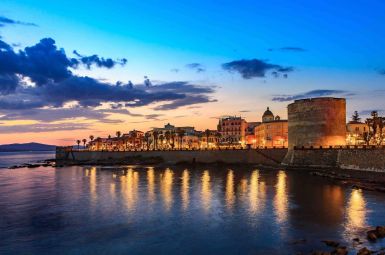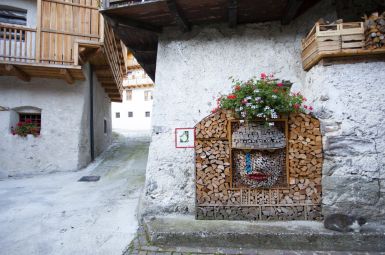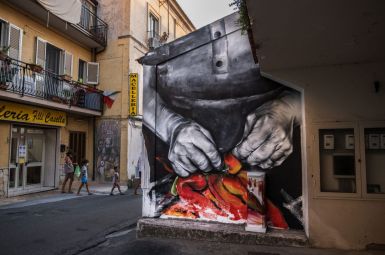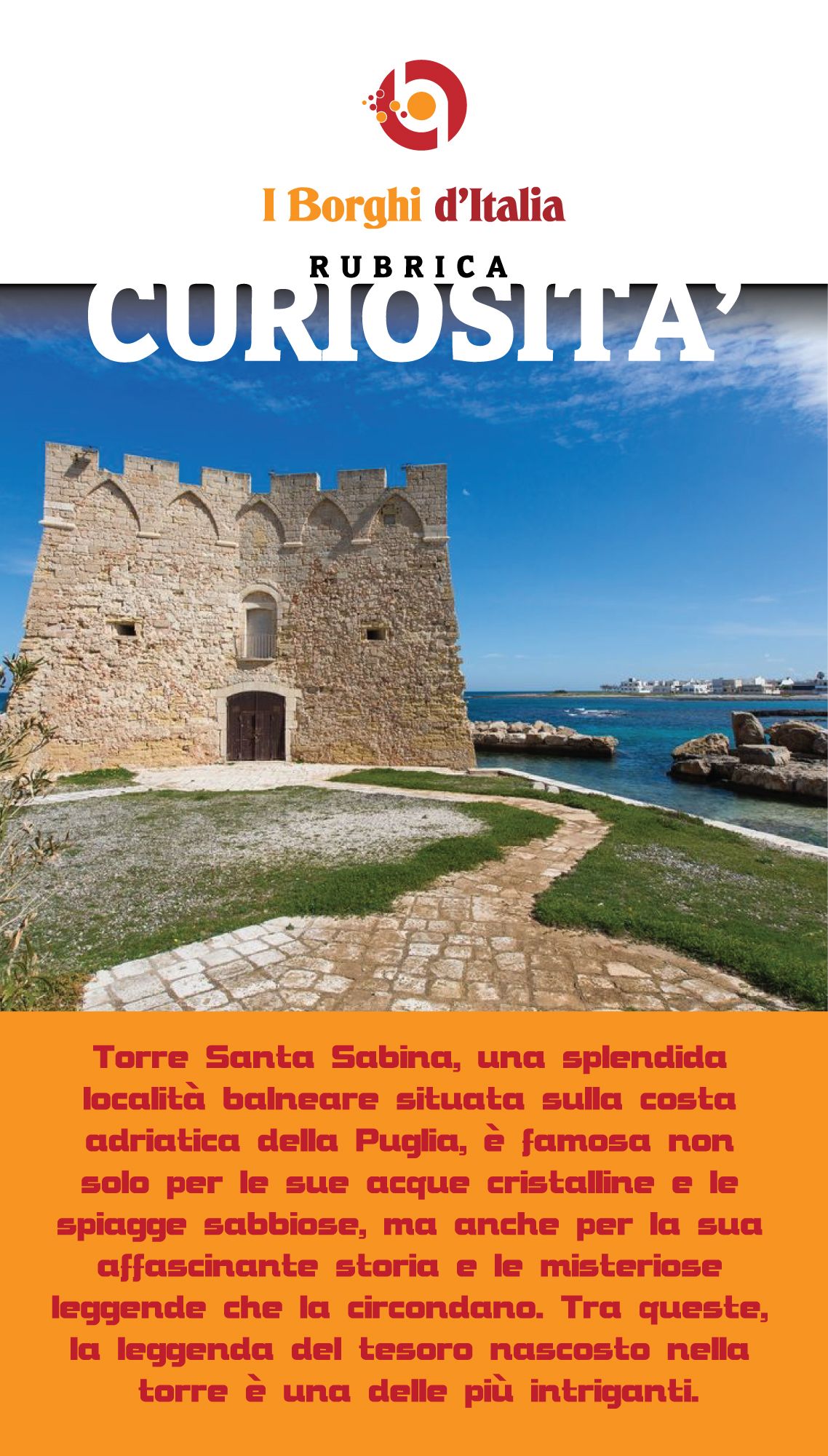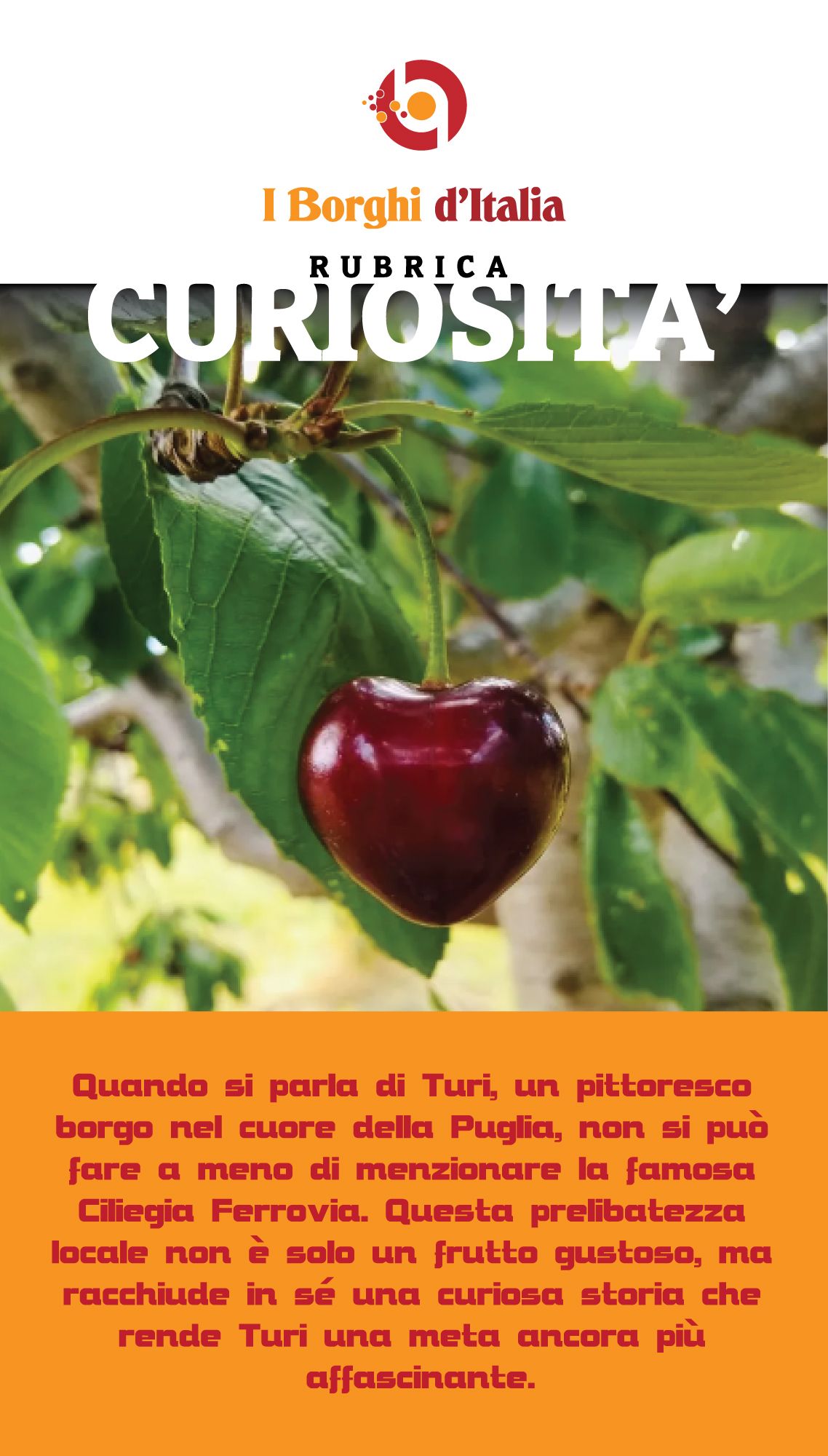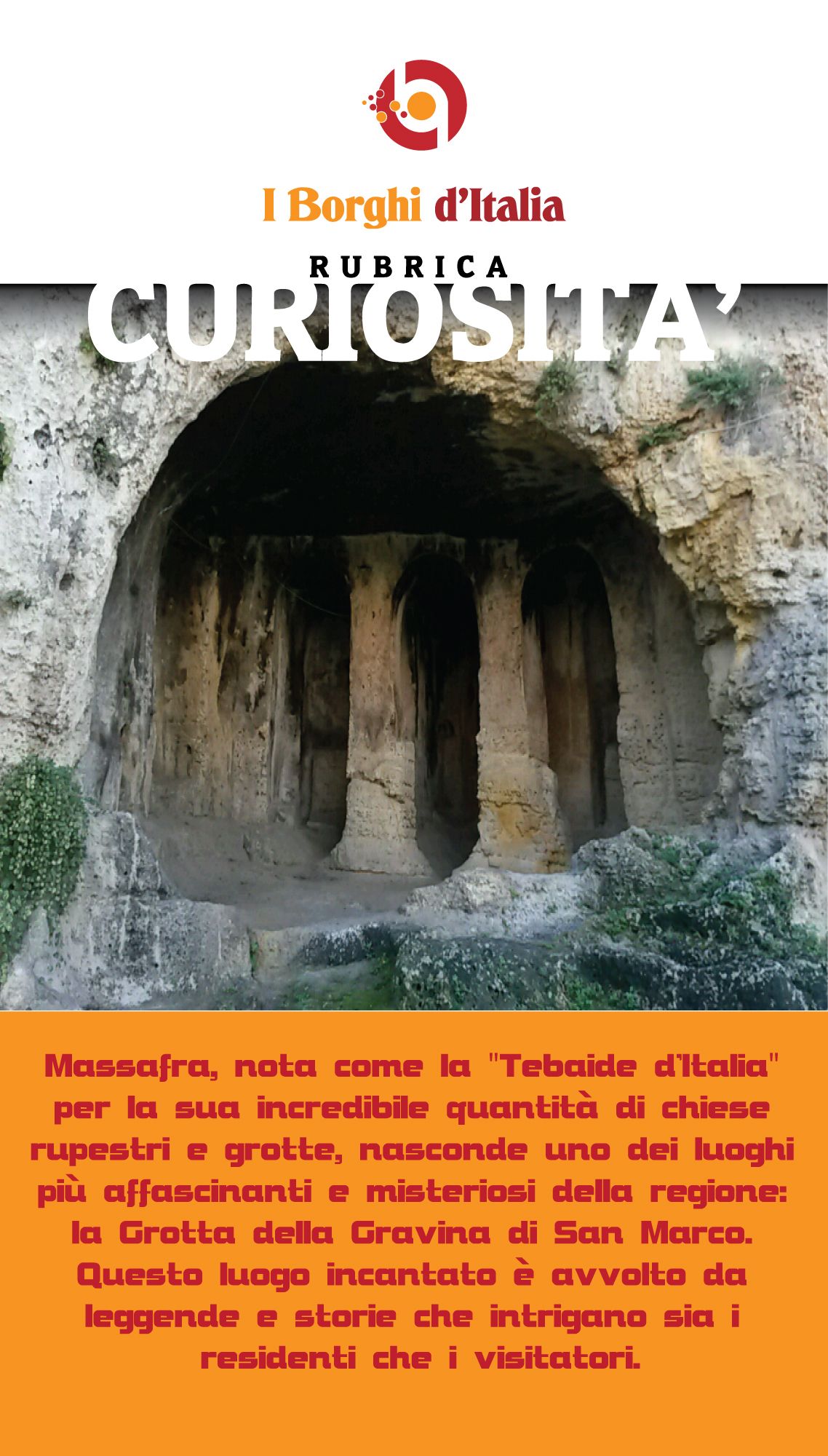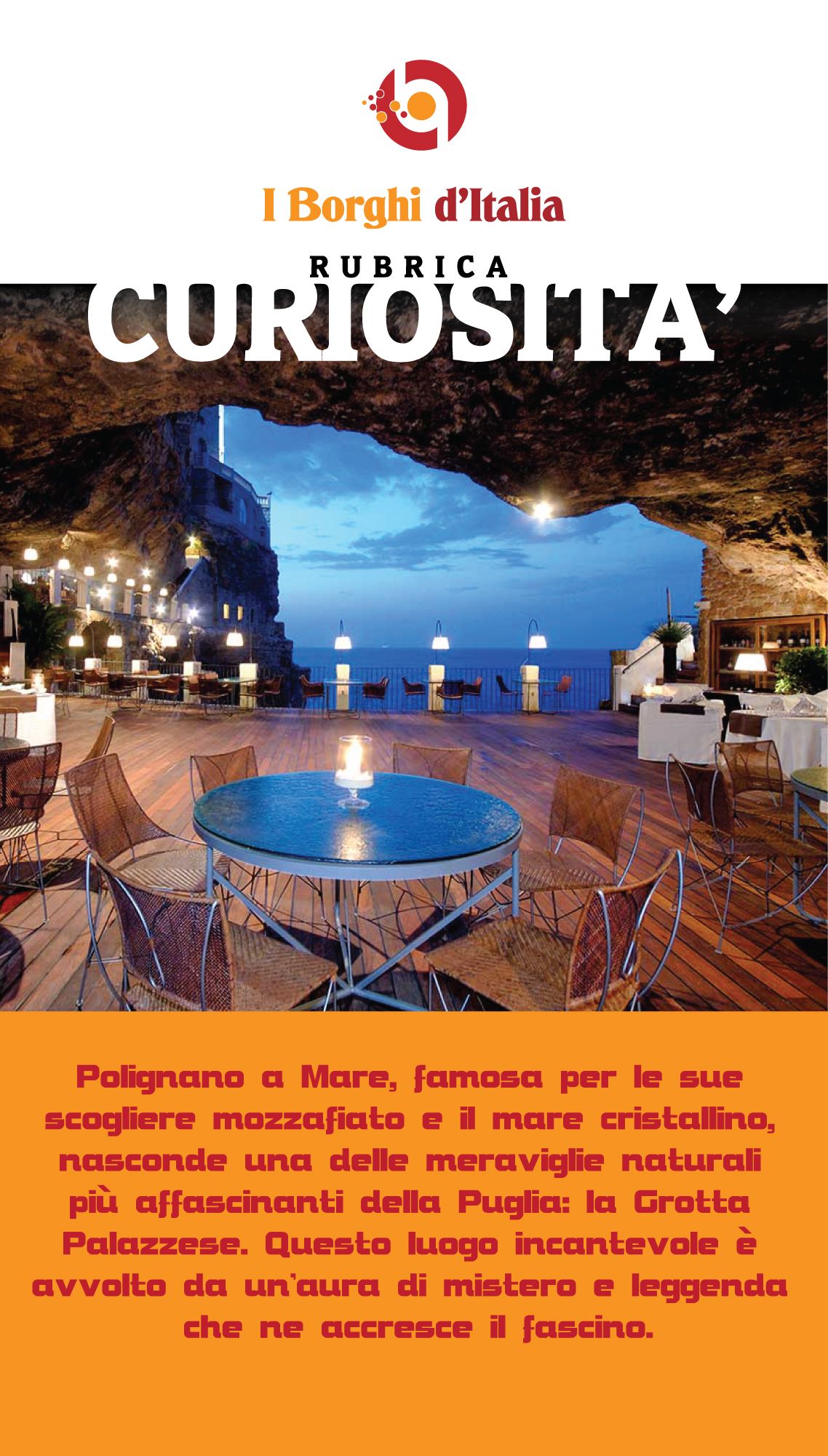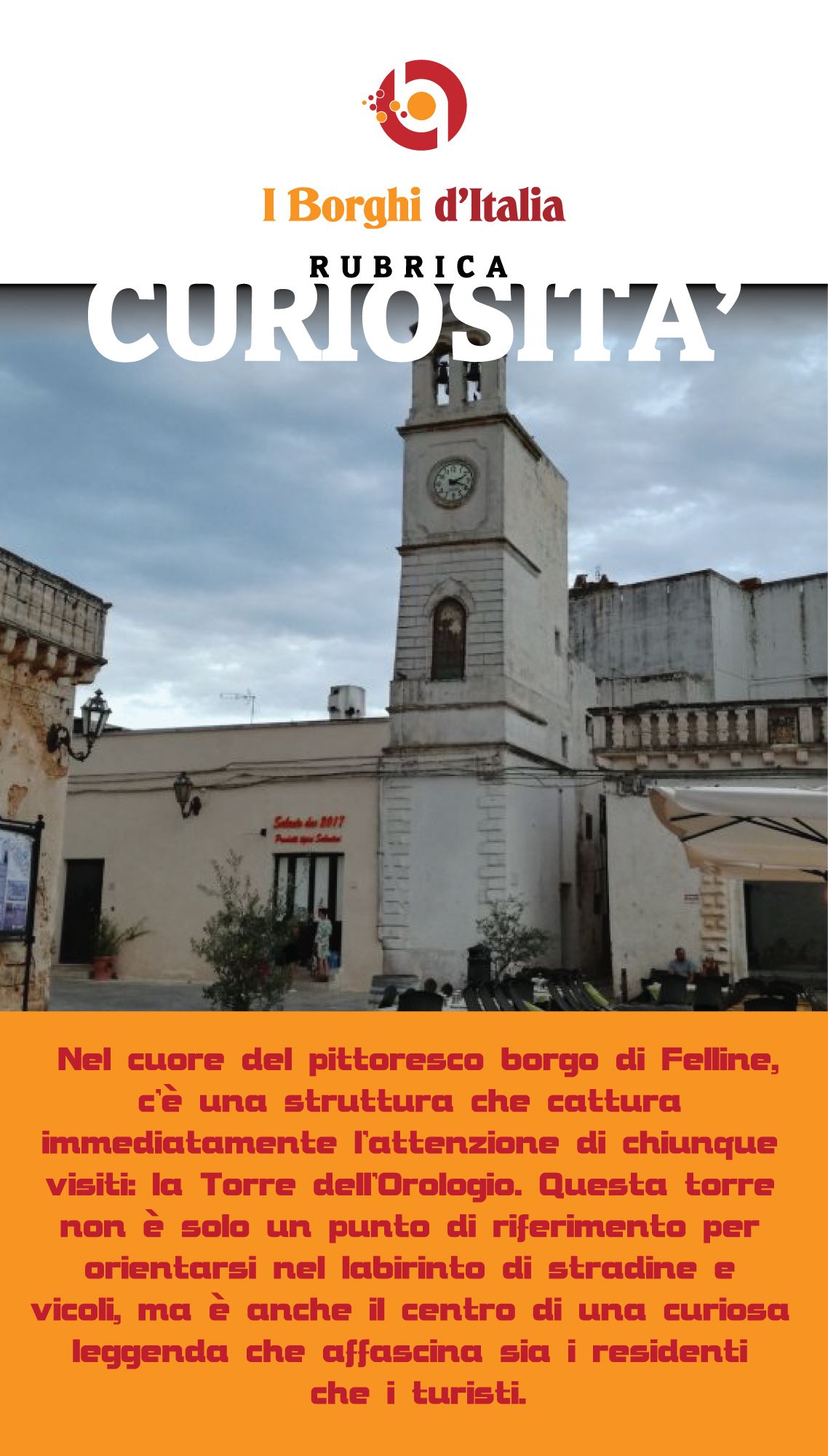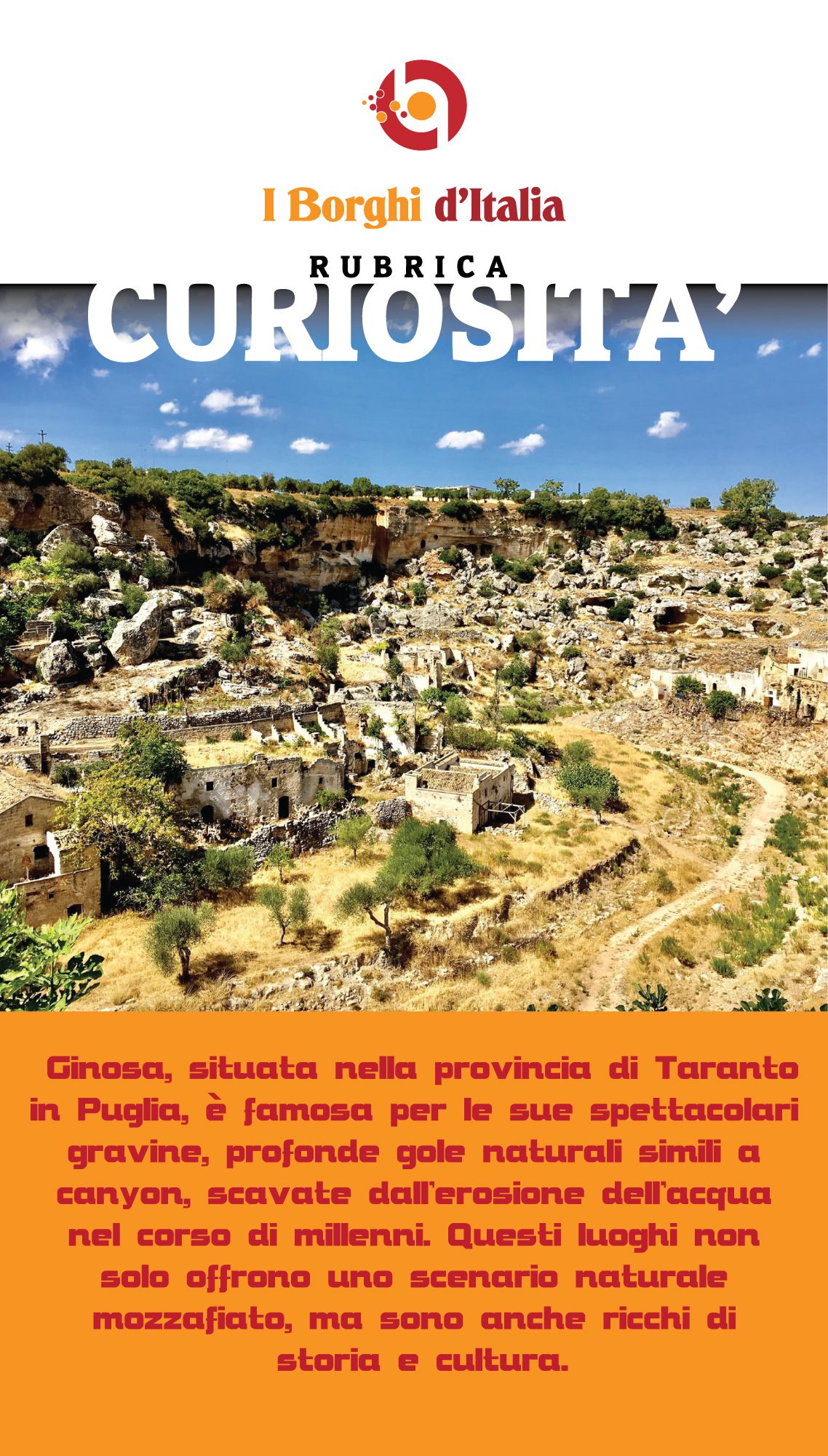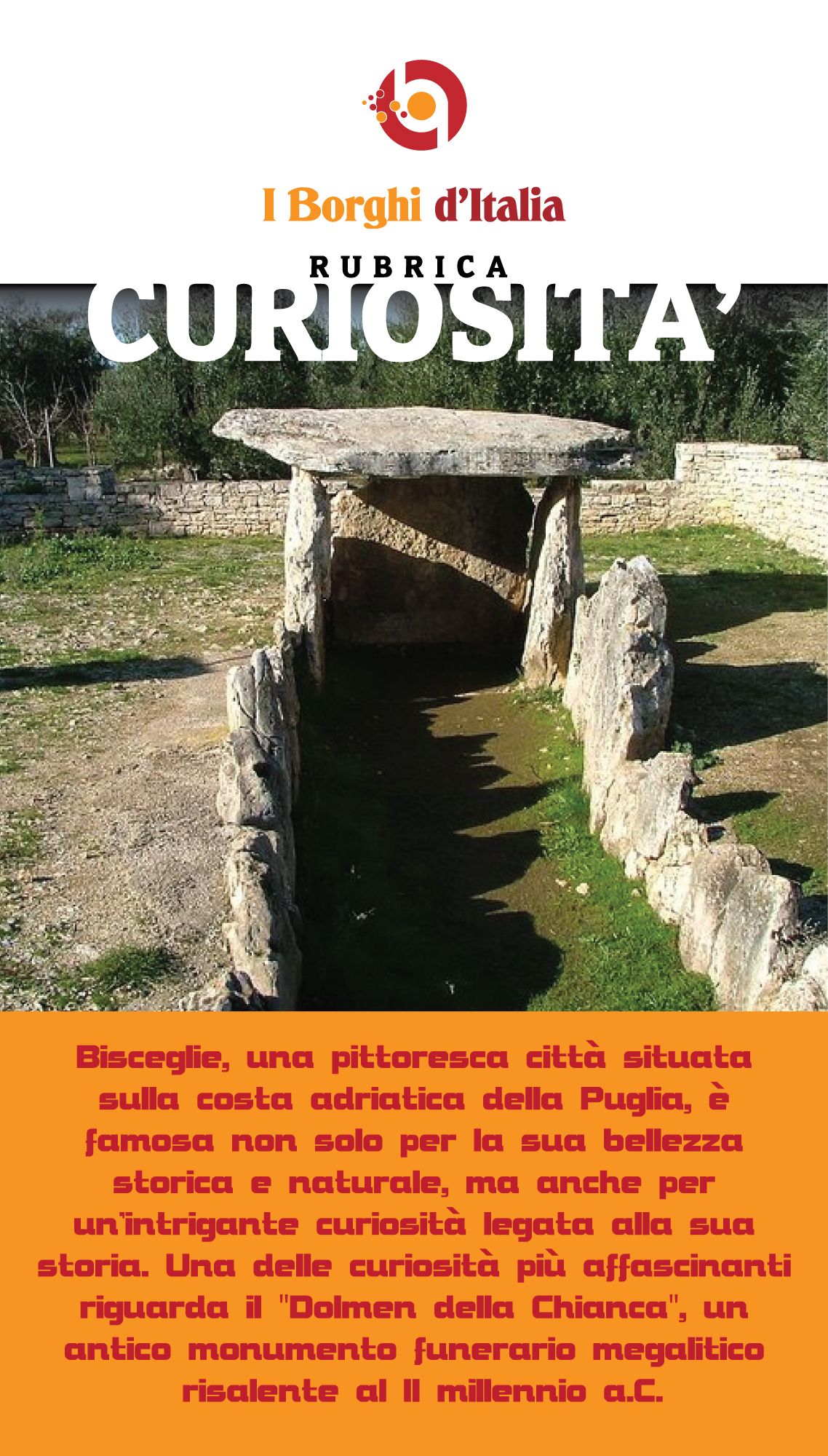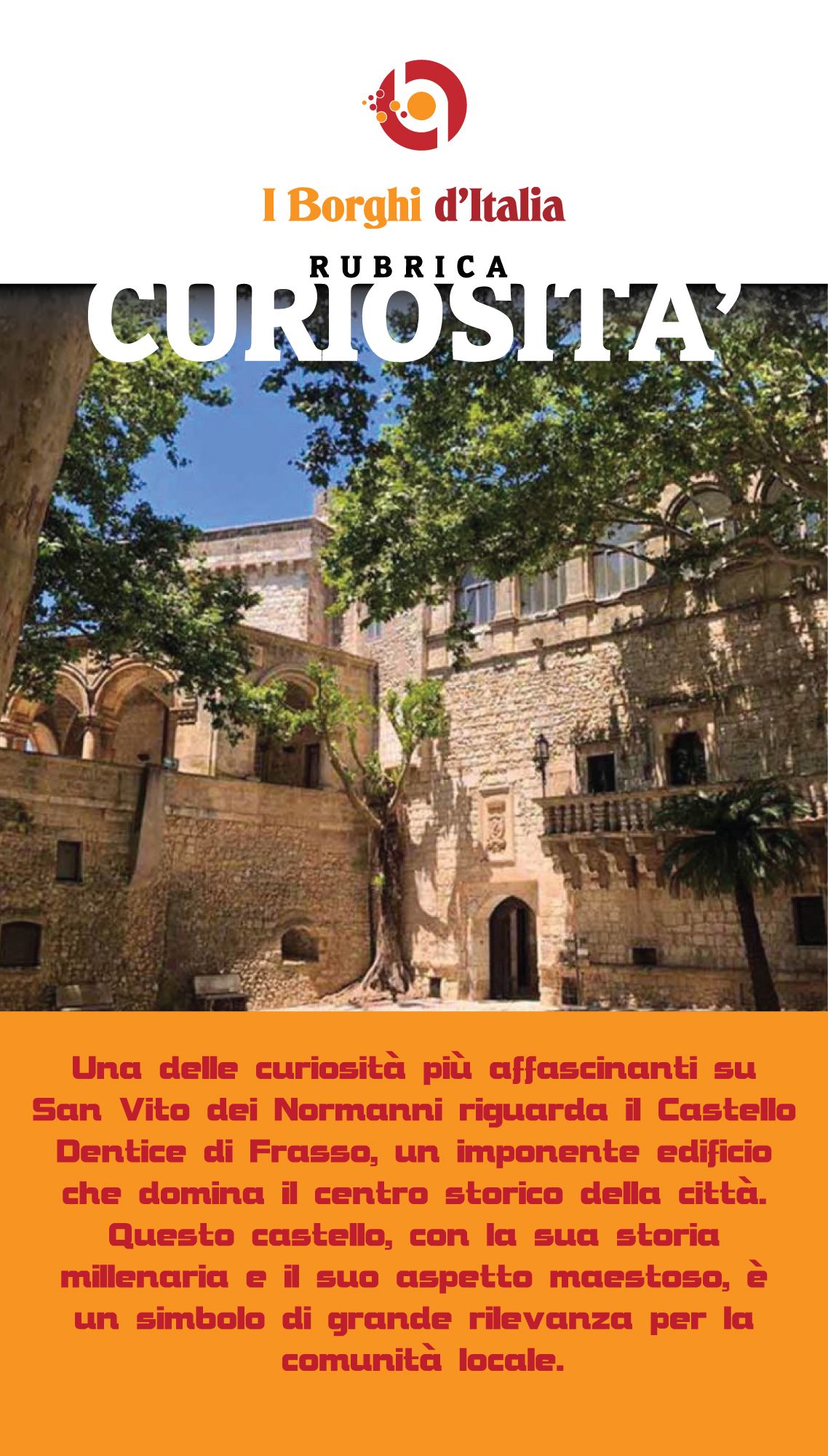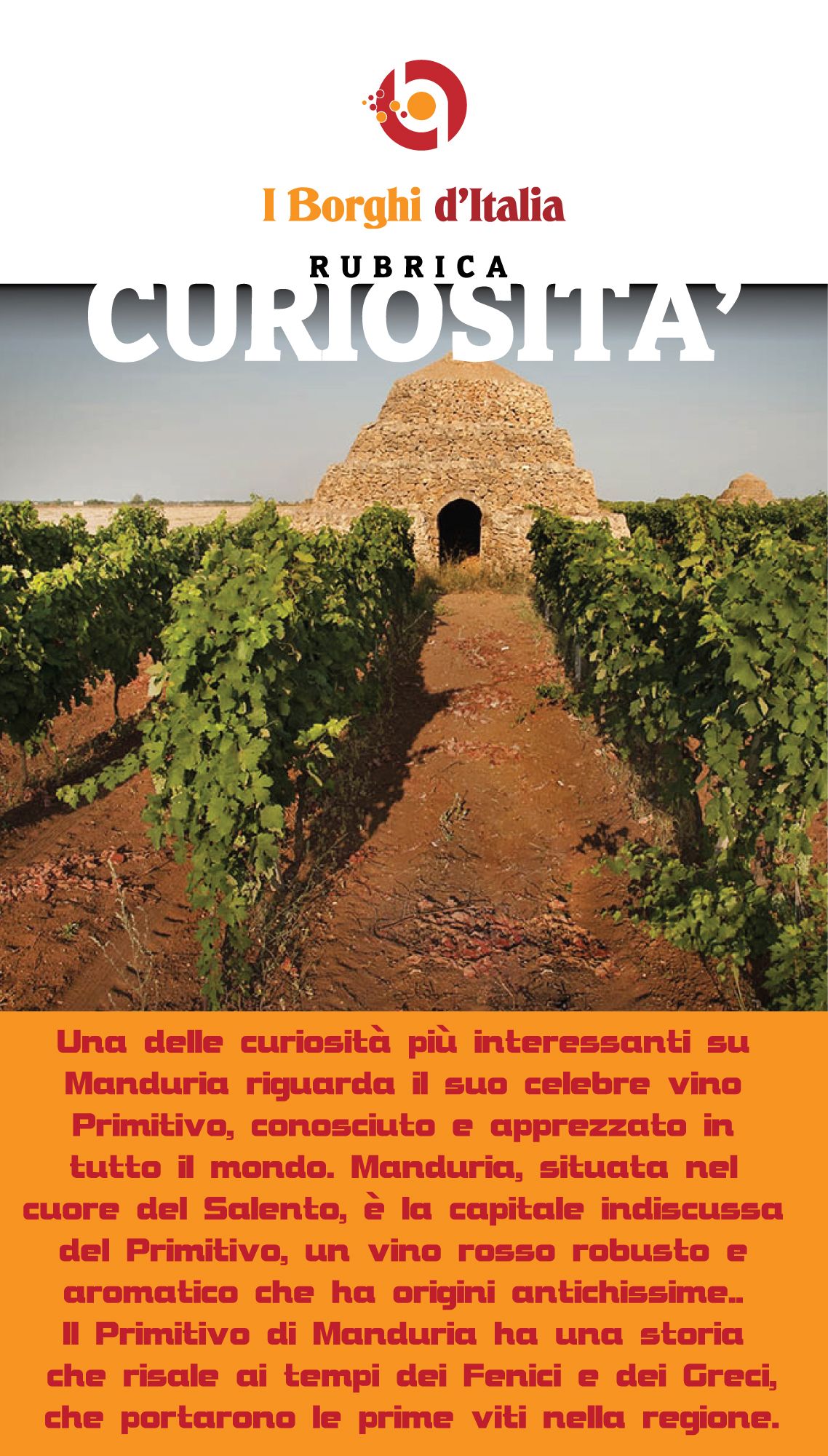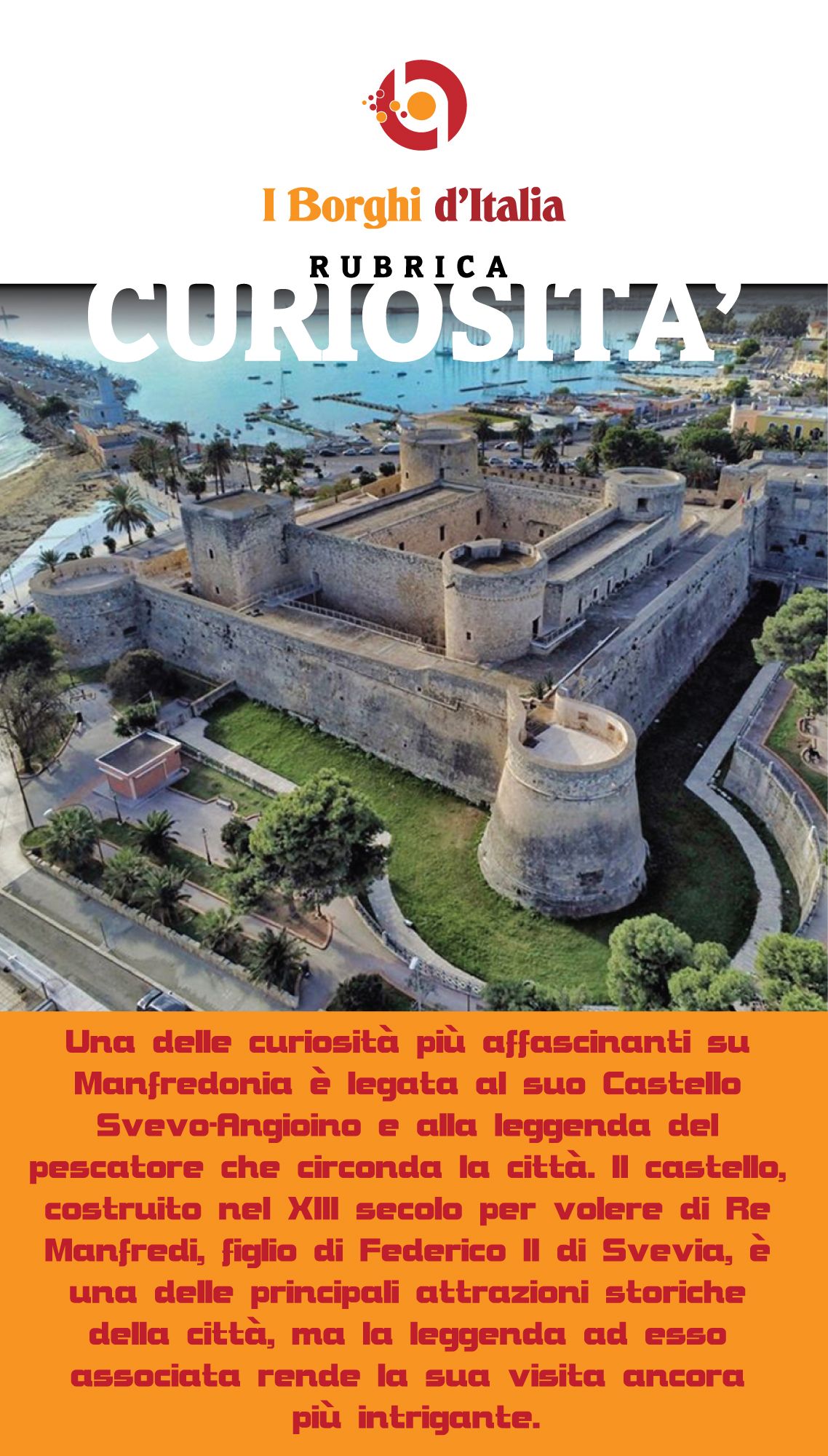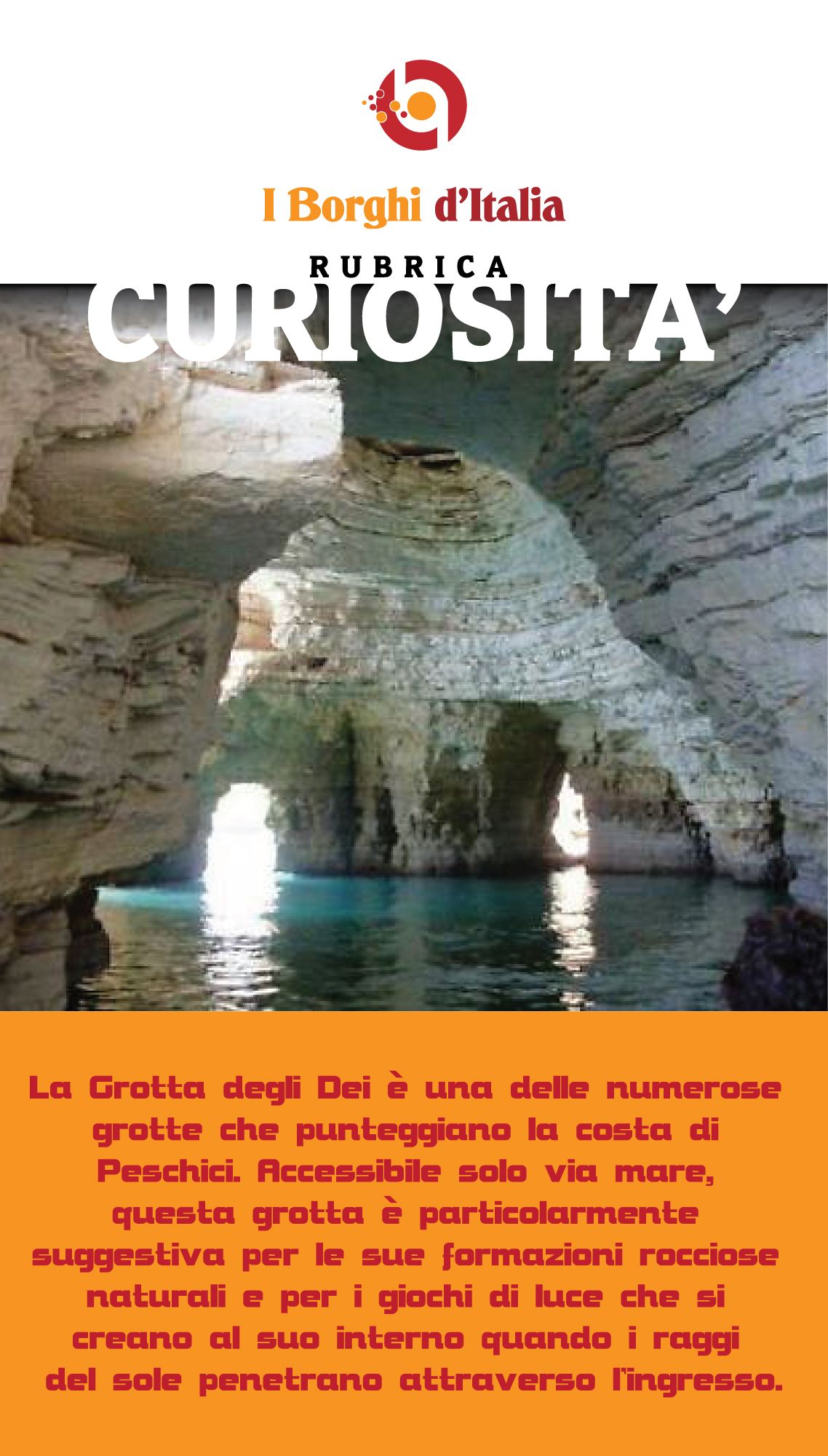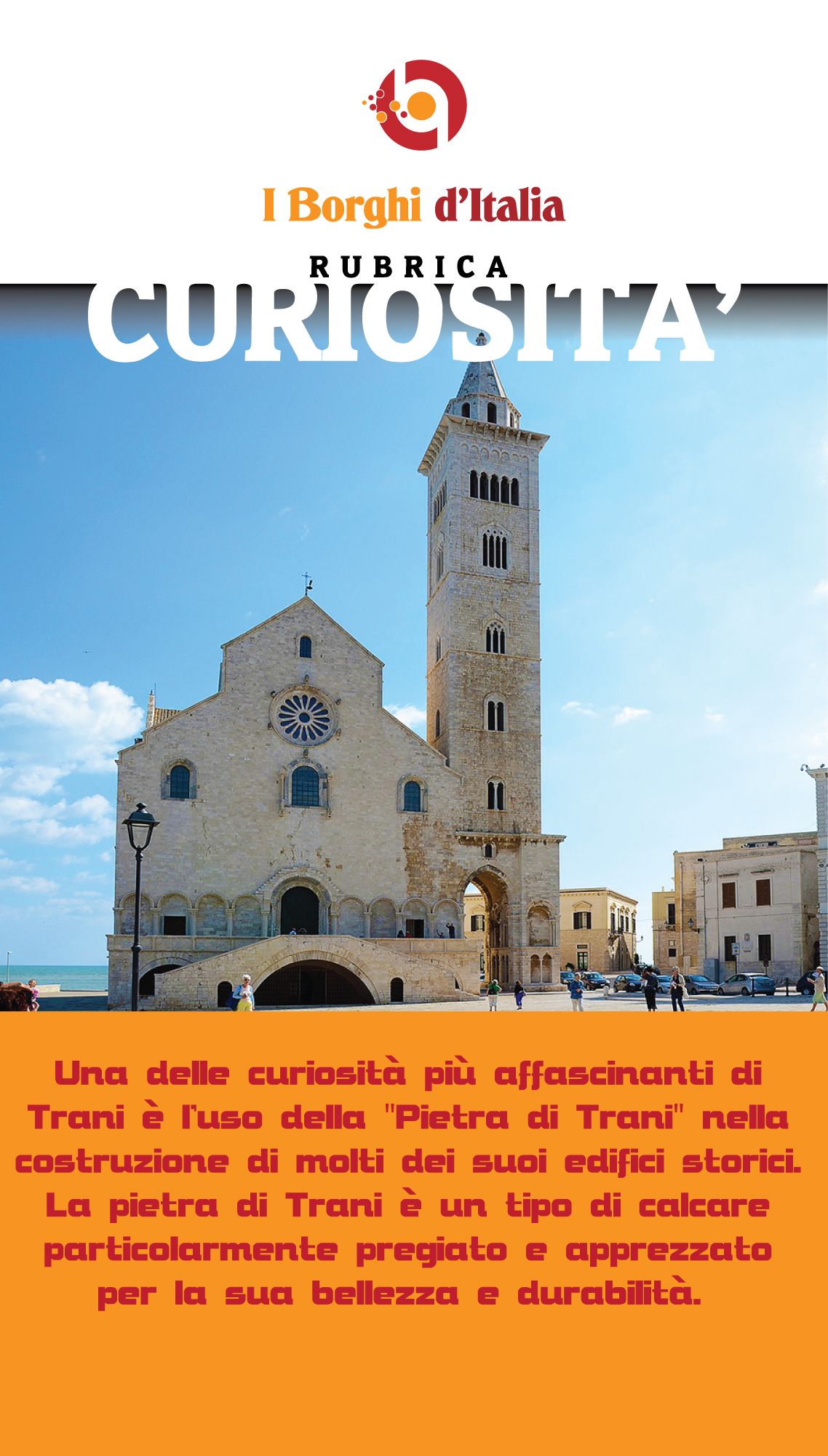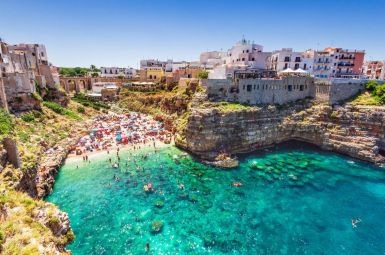
Autore: Editore
Torre Santa Sabina: Il Fascino della Torre e la Leggenda del Tesoro Nascosto
Una Curiosità su Torre Santa Sabina.
Torre Santa Sabina, una splendida località balneare situata sulla costa adriatica della Puglia, è famosa non solo per le sue acque cristalline e le spiagge sabbiose, ma anche per la sua affascinante storia e le misteriose leggende che la circondano. Tra queste, la leggenda del tesoro nascosto nella torre è una delle più intriganti.
La Storia della Torre
La torre di Santa Sabina, costruita nel XVI secolo come parte del sistema difensivo costiero voluto da Carlo V per proteggere il territorio dalle incursioni dei pirati, domina ancora oggi il paesaggio con la sua imponente struttura in pietra. Questa torre, oltre a essere un simbolo di protezione e vigilanza, nasconde tra le sue mura storie e segreti che affascinano visitatori e residenti.
La Leggenda del Tesoro
Secondo una leggenda locale, durante uno dei tanti assalti dei pirati saraceni, gli abitanti della città decisero di nascondere un prezioso tesoro all’interno della torre per evitare che cadesse nelle mani dei predoni. Si narra che il tesoro, composto da monete d’oro, gioielli e altri oggetti di valore, sia ancora nascosto da qualche parte all’interno della torre, aspettando di essere scoperto.
Un’Aura di Mistero
Questa leggenda ha contribuito a creare un’aura di mistero intorno alla torre, attirando l’attenzione di curiosi e avventurieri. Ogni anno, molti visitatori giungono a Torre Santa Sabina non solo per godere del mare e del sole, ma anche per esplorare la torre e lasciarsi affascinare dalle storie di tesori nascosti e avventure passate.
Visitare la città
Oltre alla torre e alle sue leggende, Torre Santa Sabina offre numerose attrazioni. Le sue spiagge incantevoli, le acque limpide ideali per snorkeling e immersioni, e una varietà di ristoranti che servono deliziosi piatti di pesce fresco, rendono questa località una meta perfetta per una vacanza rilassante e ricca di scoperte.
Un’Esperienza Unica
Esplorare Torre Santa Sabina significa immergersi in un luogo dove storia, leggenda e bellezza naturale si fondono armoniosamente. Che tu sia un amante della storia, un appassionato di leggende o semplicemente in cerca di una splendida destinazione balneare, Torre Santa Sabina ha qualcosa di speciale da offrire.
Conclusione
La leggenda del tesoro nascosto nella torre aggiunge un tocco di mistero e fascino a Torre Santa Sabina, rendendola una destinazione ancora più interessante. Non perdere l’occasione di visitare questo affascinante angolo della Puglia, dove ogni pietra racconta una storia e ogni ondeggiare del mare sembra sussurrare antichi segreti.
Ti aspettiamo a Torre Santa Sabina per vivere un’esperienza indimenticabile tra storia, mare e leggende!
Il Segreto della Festa della Ciliegia Ferrovia
Una Curiosità su Turi: La Ciliegia Ferrovia e la Sua Leggenda
Quando si parla di Turi, un pittoresco borgo nel cuore della Puglia, non si può fare a meno di menzionare la famosa Ciliegia Ferrovia. Questa prelibatezza locale non è solo un frutto gustoso, ma racchiude in sé una curiosa storia che rende Turi una meta ancora più affascinante.
La Nascita della Ciliegia Ferrovia
Tutto ebbe inizio negli anni ’30 del secolo scorso. Secondo la leggenda, un contadino di Turi trovò un albero di ciliegie dai frutti particolarmente grandi e dolci vicino a una stazione ferroviaria abbandonata. Impressionato dalla qualità di queste ciliegie, decise di prendersi cura dell’albero e di propagare la sua varietà. Così nacque la Ciliegia Ferrovia, che deve il suo nome proprio alla vicinanza con la ferrovia.
La Festa della Ciliegia Ferrovia
Ogni anno, a giugno, Turi celebra la Ciliegia Ferrovia con una festa che attira visitatori da tutta Italia e non solo. La “Festa della Ciliegia Ferrovia” è un evento imperdibile per chi ama la gastronomia e le tradizioni locali. Durante questa manifestazione, le strade di Turi si riempiono di bancarelle dove è possibile assaggiare e acquistare queste deliziose ciliegie, oltre a numerosi prodotti tipici del territorio.
Un’Esperienza Unica
Ma la festa non si ferma qui. Gli abitanti di Turi organizzano anche spettacoli folcloristici, sfilate in costumi tradizionali e concerti dal vivo, creando un’atmosfera festosa e accogliente. La Festa della Ciliegia Ferrovia è un’ottima occasione per scoprire il patrimonio culturale di Turi e vivere un’esperienza autentica nel cuore della Puglia.
Un Successo che Attraversa i Confini
Grazie alla sua unicità, la Ciliegia Ferrovia di Turi ha ottenuto numerosi riconoscimenti a livello nazionale e internazionale. Questo ha permesso a Turi di diventare un punto di riferimento per la produzione di ciliegie di alta qualità, contribuendo allo sviluppo economico del territorio e attirando turisti e appassionati di gastronomia.
Conclusione
Se non hai ancora visitato Turi durante la Festa della Ciliegia Ferrovia, è il momento di segnare questa esperienza sul tuo calendario. Scoprirai non solo la bontà delle ciliegie, ma anche l’ospitalità e le tradizioni di un borgo che sa come celebrare le sue eccellenze. Tra sapori unici e atmosfere suggestive, Turi ti aspetta per farti vivere una festa indimenticabile.
Non perdere l’occasione di immergerti in questa straordinaria celebrazione. Vi aspettiamo a Turi!
Massafra: Tra Storia e Mistero, La Grotta della Gravina di San Marco
Una Curiosità su Massafra: Il Mistero della Grotta della Gravina di San Marco
Massafra, nota come la “Tebaide d’Italia” per la sua incredibile quantità di chiese rupestri e grotte, nasconde uno dei luoghi più affascinanti e misteriosi della regione: la Grotta della Gravina di San Marco. Questo luogo incantato è avvolto da leggende e storie che intrigano sia i residenti che i visitatori.
La Storia della Grotta della Gravina di San Marco
Situata nella profonda Gravina di San Marco, la grotta è un perfetto esempio delle meraviglie naturali e storiche che caratterizzano Massafra. Utilizzata fin dall’antichità come rifugio e luogo di culto, la grotta è stata abitata da eremiti e monaci che hanno lasciato segni indelebili del loro passaggio.
Un Rifugio Sacro
La Grotta della Gravina è famosa per essere stata un importante centro religioso. Al suo interno, si possono ancora ammirare affreschi bizantini ben conservati, raffiguranti santi e scene religiose. Questi affreschi sono testimoni silenziosi di un’epoca in cui la grotta era un luogo di preghiera e meditazione per i monaci.
La Leggenda del Cavaliere
Una delle leggende più affascinanti legate alla Grotta di San Marco riguarda un cavaliere misterioso. Si racconta che, durante il Medioevo, un nobile cavaliere si rifugiò nella grotta per sfuggire ai suoi nemici. Protetto dalle pareti naturali della gravina, il cavaliere trovò pace e ispirazione nella grotta, dedicandosi alla meditazione e alla preghiera. Si dice che lo spirito del cavaliere protegga ancora oggi la grotta, vegliando su coloro che vi entrano con il cuore puro.
Esplorare la Grotta della Gravina di San Marco
Visitare la Grotta di San Marco è un’esperienza unica che permette di immergersi nella storia e nella natura. La gravina stessa è un canyon naturale impressionante, con pareti scoscese che nascondono numerose altre grotte e insediamenti rupestri. Passeggiando lungo i sentieri della gravina, si possono scoprire tracce di antiche civiltà e godere di panorami mozzafiato.
La Magia di Massafra
Oltre alla Grotta della Gravina, Massafra offre una ricca varietà di attrazioni. Il Castello di Massafra, le chiese rupestri, e il centro storico con le sue stradine strette e i balconi fioriti sono solo alcune delle meraviglie da esplorare. La città è anche famosa per il suo Carnevale, uno dei più antichi e suggestivi della Puglia.
Conclusione
La Grotta di San Marco è un luogo dove storia, leggenda e natura si incontrano in un perfetto equilibrio. Visitare questa grotta significa fare un tuffo nel passato, esplorando i segreti e i misteri di Massafra, una città che continua a sorprendere e affascinare i suoi visitatori.
Polignano a Mare: La Perla dell’Adriatico e il Mistero della Grotta Palazzese
Una Curiosità su Polignano a Mare: La Magica Grotta Palazzese
Polignano a Mare, famosa per le sue scogliere mozzafiato e il mare cristallino, nasconde una delle meraviglie naturali più affascinanti della Puglia: la Grotta Palazzese. Questo luogo incantevole è avvolto da un’aura di mistero e leggenda che ne accresce il fascino.
La Storia della Grotta Palazzese
Situata nel cuore delle scogliere di Polignano, la Grotta è una caverna naturale che si affaccia direttamente sul mare. La sua storia è tanto affascinante quanto antica. Si dice che già nel 1700 i nobili della zona utilizzassero questa grotta come luogo di ritrovo per banchetti e feste private, grazie alla sua posizione privilegiata e alla vista mozzafiato sull’Adriatico.
Un Ristorante Unico al Mondo
Oggi, la Grotta Palazzese ospita uno dei ristoranti più suggestivi e romantici del mondo. Cenare in questo luogo è un’esperienza unica: le pareti della grotta sono illuminate da luci soffuse, il suono delle onde che si infrangono sugli scogli crea una melodia naturale, e la vista sul mare è semplicemente indimenticabile. Questo ristorante è diventato una meta ambita per coppie in cerca di una cena speciale e per tutti coloro che desiderano vivere un momento magico.
La Leggenda della Grotta
Oltre alla sua bellezza naturale, la Grotta Palazzese è legata a una leggenda locale. Si racconta che un giovane pescatore di Polignano, innamorato di una bellissima ragazza del luogo, scoprì la grotta per caso mentre cercava un posto tranquillo per dichiararsi. Colpito dalla maestosità del luogo, decise di portare la sua amata lì per chiederle la mano. La ragazza, incantata dalla bellezza della grotta e dall’amore del giovane, accettò immediatamente. Da allora, la Grotta Palazzese è vista come un luogo dove l’amore e la natura si incontrano in una perfetta armonia.
Visitare Polignano a Mare
Polignano a Mare offre molto più della Grotta . Il centro storico, con le sue strette viuzze e le case bianche, è un labirinto di fascino e storia. Le spiagge, le grotte marine e i balconi panoramici offrono viste spettacolari che rimangono impresse nella memoria. Non dimenticate di assaggiare il famoso gelato locale mentre passeggiate sul lungomare!
Conclusione
La Grotta è un gioiello nascosto di Polignano a Mare, un luogo dove la natura ha creato un’opera d’arte e l’uomo ha saputo valorizzarla con rispetto e ammirazione. Visitare questa grotta significa immergersi in un’atmosfera magica, dove storia e leggenda si intrecciano, regalando un’esperienza indimenticabile.
Felline: Il Mistero della Torre dell’Orologio
Il Fascino Nascosto di un Borgo del Salento
Nel cuore del pittoresco borgo di Felline, c’è una struttura che cattura immediatamente l’attenzione di chiunque visiti: la Torre dell’Orologio. Questa torre non è solo un punto di riferimento per orientarsi nel labirinto di stradine e vicoli, ma è anche il centro di una curiosa leggenda che affascina sia i residenti che i turisti.
La Leggenda della Torre
Si narra che la Torre dell’Orologio di Felline sia stata costruita in un solo giorno. Secondo la leggenda, il signore del castello desiderava ardentemente una torre con un orologio per adornare il borgo, e fece un patto con un misterioso artigiano locale. L’accordo prevedeva che l’artigiano avrebbe avuto il tempo di una notte per completare l’opera. Se ci fosse riuscito, avrebbe ottenuto una ricompensa sostanziosa; in caso contrario, avrebbe dovuto lasciare Felline per sempre.
L’artigiano, noto per la sua abilità e velocità, accettò la sfida. La notte stessa, sotto la luce delle stelle, lavorò incessantemente, e con grande sorpresa di tutti, la torre fu completata prima del sorgere del sole. Il signore del castello, ammirato dalla bravura dell’artigiano, mantenne la sua promessa e lo ricompensò generosamente.
Un Simbolo di Tempo e Storia
Oggi, la Torre dell’Orologio è più di una semplice costruzione; è un simbolo del tempo che passa e delle storie che formano l’anima di Felline. Gli abitanti del borgo raccontano con orgoglio questa leggenda, che contribuisce a mantenere viva la memoria storica del luogo.
Passeggiando per Felline, si può sentire l’eco delle antiche campane della torre, che scandiscono il ritmo della vita quotidiana, ricordando a tutti l’importanza del tempo e delle tradizioni.
Visitare Felline
Se vi trovate in Salento, una visita a Felline è d’obbligo. Oltre alla Torre dell’Orologio, il borgo offre una serie di attrazioni storiche e culturali, tra cui il Castello di Felline e la Chiesa di San Leucio. Le strette viuzze, le case in pietra e l’accoglienza calorosa degli abitanti rendono Felline un luogo incantevole da scoprire.
Conclusione
La Torre dell’Orologio di Felline non è solo un punto di riferimento fisico, ma anche un simbolo di ingegno e determinazione. La sua storia leggendaria aggiunge un tocco di magia al fascino di questo borgo salentino, invitando i visitatori a esplorare e a immergersi nella sua ricca eredità culturale.
Ginosa
Ginosa, situata nella provincia di Taranto in Puglia, è famosa per le sue spettacolari gravine, profonde gole naturali simili a canyon, scavate dall’erosione dell’acqua nel corso di millenni. Questi luoghi non solo offrono uno scenario naturale mozzafiato, ma sono anche ricchi di storia e cultura.

Caratteristiche delle Gravine
- Origine Geologica: Le gravine sono formate dall’erosione dell’acqua che ha scavato il terreno calcareo, creando profonde gole e grotte.
- Paesaggio: Le gravine di Ginosa sono caratterizzate da pareti ripide e rocciose, con vegetazione rigogliosa che cresce nelle fessure e sulle pareti. La Gravina di Ginosa è una delle più note e visitate.
Importanza Storica e Archeologica
- Insediamenti Rupestri: Nel corso dei secoli, le gravine sono state utilizzate come rifugio e abitazione da diverse civiltà. Le pareti delle gravine sono punteggiate di grotte naturali e artificiali, molte delle quali furono trasformate in chiese, abitazioni e luoghi di sepoltura.
- Chiese Rupestri: Ginosa vanta numerose chiese rupestri, scavate nella roccia, decorate con affreschi di grande valore storico e artistico. Queste chiese offrono uno sguardo unico sulla vita religiosa e quotidiana delle comunità che abitavano la zona nel passato.
Una Curiosità Particolare
Una delle chiese rupestri più affascinanti di Ginosa è la “Chiesa di Santa Sofia”. Questa chiesa, scavata nella roccia, contiene affreschi risalenti al periodo bizantino e testimonia l’influenza della cultura bizantina nella regione. Gli affreschi, sebbene in parte danneggiati dal tempo, mostrano figure di santi e scene religiose di grande bellezza e interesse storico.
Valore Culturale
Le gravine di Ginosa rappresentano una combinazione unica di bellezze naturali e patrimonio storico. Esse sono un importante sito turistico e culturale, attirando visitatori e studiosi da tutto il mondo interessati alla storia, all’archeologia e alla natura della Puglia.
Questa straordinaria fusione di natura e storia fa delle gravine di Ginosa un luogo davvero unico e affascinante, che continua a raccontare le storie delle civiltà che vi hanno abitato attraverso i secoli.
Bisceglie
Bisceglie, una pittoresca città situata sulla costa adriatica della Puglia, è famosa non solo per la sua bellezza storica e naturale, ma anche per un’intrigante curiosità legata alla sua storia. Una delle curiosità più affascinanti riguarda il “Dolmen della Chianca”, un antico monumento funerario megalitico risalente al II millennio a.C.
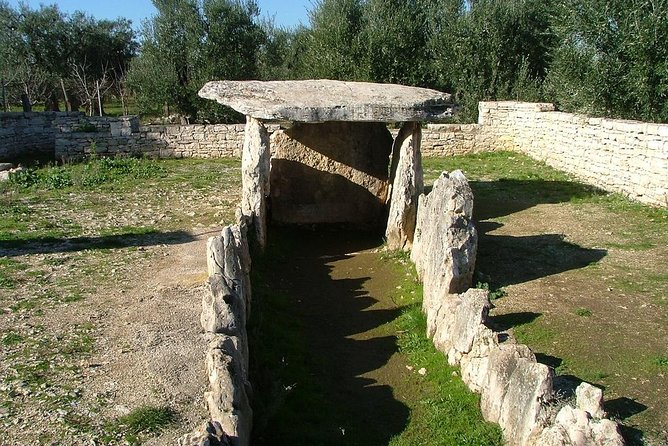
Il Dolmen della Chianca è uno dei meglio conservati in Italia ed è costituito da grandi lastre di pietra disposte verticalmente e orizzontalmente per formare una camera sepolcrale. Questo sito archeologico non solo testimonia l’antichità dell’insediamento umano nella zona, ma è anche un importante punto di riferimento per gli studi sulla preistoria del Mediterraneo. Inoltre, la scoperta del dolmen ha contribuito a rafforzare l’identità culturale di Bisceglie, rendendolo un luogo di grande interesse per i visitatori e gli studiosi di tutto il mondo.
Cos’è un Dolmen?
Un dolmen è un tipo di tomba megalitica, costruita con grandi pietre. Questi monumenti funerari risalgono al periodo neolitico (circa 4000-3000 a.C.) e sono diffusi in diverse parti del mondo, ma sono particolarmente comuni in Europa. I dolmen erano utilizzati come tombe collettive e sono tra le prime strutture architettoniche realizzate dall’uomo.
Il Dolmen della Chianca
Il Dolmen della Chianca prende il nome dalla parola locale “chianca”, che significa “pietra piatta”. Questo dolmen è situato nella campagna di Bisceglie, in provincia di Barletta-Andria-Trani, e risale all’età del Bronzo (circa 2000-1500 a.C.). È uno dei dolmen meglio conservati in Italia.
Caratteristiche del Dolmen della Chianca
- Struttura: È costituito da tre grandi lastre verticali che formano una camera rettangolare. Queste lastre sono sormontate da una grande lastra orizzontale che funge da tetto.
- Dimensioni: La camera sepolcrale è lunga circa 2,10 metri, larga 1,30 metri e alta 1,80 metri.
- Funzione: Era utilizzato come tomba collettiva. All’interno sono stati trovati resti umani e oggetti funerari, come ceramiche e utensili in pietra, che indicano l’uso del dolmen per sepolture rituali.
- Scavi: Il dolmen fu scoperto nel 1909 da un gruppo di archeologi locali. Gli scavi successivi hanno rivelato numerosi reperti che hanno fornito preziose informazioni sulle pratiche funerarie dell’epoca.
Importanza Culturale e Storica
Il Dolmen della Chianca è un sito archeologico di grande importanza per diverse ragioni:
- Archeologia: Offre una finestra unica sulla vita e le pratiche funerarie delle comunità neolitiche della regione.
- Turismo: È un’attrazione turistica importante per Bisceglie, attirando visitatori interessati alla storia e alla preistoria.
- Identità Culturale: Rappresenta un simbolo della ricca eredità culturale della Puglia e dell’Italia meridionale.
Conservazione
Il sito è protetto e curato per preservarne l’integrità e permettere ai visitatori di apprezzare uno dei più antichi monumenti della regione. Iniziative locali e regionali promuovono la conoscenza e la valorizzazione del Dolmen della Chianca, rendendolo un punto di riferimento importante per l’identità culturale di Bisceglie e della Puglia.
Il Dolmen della Chianca è quindi non solo un monumento archeologico, ma anche un importante simbolo storico e culturale che continua a affascinare studiosi e visitatori di tutto il mondo.
Il Castello Dentice di Frasso
Il Castello Dentice di Frasso: Il Cuore di San Vito dei Normanni
Una delle curiosità più affascinanti su San Vito dei Normanni riguarda il Castello Dentice di Frasso, un imponente edificio che domina il centro storico della città. Questo castello, con la sua storia millenaria e il suo aspetto maestoso, è un simbolo di grande rilevanza per la comunità locale.

Un Castello dalle Origini Normanne
Il Castello Dentice di Frasso fu costruito nel XII secolo dai Normanni, che arrivarono in Puglia durante le loro campagne di conquista nel Sud Italia. Originariamente progettato come una fortezza militare, il castello ha subito numerosi ampliamenti e modifiche nel corso dei secoli, trasformandosi in una residenza nobiliare nel Rinascimento.
Architettura e Caratteristiche
Il castello presenta una pianta quadrangolare con torri angolari e mura possenti, tipiche delle strutture difensive normanne. Al suo interno, si possono ammirare eleganti sale decorate con affreschi, mobili d’epoca e una cappella privata. La facciata del castello, con il suo portale decorato e le finestre a bifora, è un esempio di architettura rinascimentale.
La Famiglia Dentice di Frasso
Nel XVI secolo, il castello divenne proprietà della famiglia Dentice di Frasso, che lo abitò per secoli e contribuì alla sua espansione e abbellimento. I Dentice di Frasso erano una delle famiglie nobili più influenti della regione, e il castello divenne un centro di potere politico e sociale.
Leggende e Misteri
Intorno al castello ruotano diverse leggende e storie misteriose. Una delle più famose riguarda un passaggio segreto che collegherebbe il castello a una vicina chiesa, utilizzato dai nobili per fuggire in caso di attacco. Sebbene questo passaggio non sia mai stato trovato, la leggenda continua a intrigare storici e visitatori.
Un Patrimonio Culturale
Oggi, il Castello Dentice di Frasso è un importante sito turistico e culturale, ospitando eventi, mostre e visite guidate. La sua storia e la sua bellezza architettonica attirano visitatori da tutto il mondo, contribuendo a valorizzare il patrimonio storico di San Vito dei Normanni.
Questa curiosità su San Vito dei Normanni mette in evidenza l’importanza storica e culturale del Castello Dentice di Frasso, invitando i visitatori a esplorare questo affascinante monumento e a scoprire le storie e le leggende che ne fanno un simbolo di grande interesse.
Il Primitivo di Manduria
Il Vino Primitivo di Manduria: Un Eccellenza Pugliese
Una delle curiosità più interessanti su Manduria riguarda il suo celebre vino Primitivo, conosciuto e apprezzato in tutto il mondo. Manduria, situata nel cuore del Salento, è la capitale indiscussa del Primitivo, un vino rosso robusto e aromatico che ha origini antichissime.

Un Vino dalla Storia Millenaria
Il Primitivo ha una storia che risale ai tempi dei Fenici e dei Greci, che portarono le prime viti nella regione. Il nome “Primitivo” deriva dal fatto che questa varietà di uva matura precocemente rispetto ad altre, garantendo una vendemmia anticipata. Questo particolare vitigno ha trovato nelle terre rosse e argillose di Manduria il suo habitat ideale, producendo vini di alta qualità con una notevole concentrazione di zuccheri e una buona struttura tannica.
Caratteristiche Uniche
Il Primitivo si distingue per il suo colore rosso intenso e i suoi profumi complessi, che spaziano dalle note di frutti rossi e neri, come ciliegie e prugne, a sentori speziati e di cioccolato. Al palato, è un vino corposo, caldo e morbido, con un gusto ricco e persistente, che si abbina perfettamente a piatti di carne, formaggi stagionati e piatti della tradizione pugliese.
Il Museo della Civiltà del Vino Primitivo
A Manduria, è possibile visitare il Museo della Civiltà del Vino Primitivo, ospitato all’interno della Cantina Produttori di Manduria. Il museo offre un viaggio affascinante nella storia e nella cultura del vino Primitivo, con un percorso espositivo che include antichi strumenti di lavorazione, documenti storici, e fotografie. I visitatori possono anche partecipare a degustazioni guidate per scoprire tutte le sfumature di questo straordinario vino.
Un Simbolo di Identità Culturale
Il Primitivo non è solo un prodotto enogastronomico di eccellenza, ma anche un simbolo dell’identità culturale e storica della città. Ogni anno, Manduria celebra questo vino con eventi e festival che attirano appassionati e turisti da ogni parte del mondo, contribuendo a mantenere viva la tradizione vitivinicola locale e a promuovere il territorio.
Questa curiosità su Manduria mette in luce l’importanza del Primitivo nella storia e nella cultura della città, invitando i visitatori a scoprire e apprezzare uno dei tesori enologici più pregiati della Puglia.
La Leggenda del Pescatore
La Leggenda del Pescatore e il Castello di Manfredonia
Una delle curiosità più affascinanti su Manfredonia è legata al suo Castello Svevo-Angioino e alla leggenda del pescatore che circonda la città. Il castello, costruito nel XIII secolo per volere di Re Manfredi, figlio di Federico II di Svevia, è una delle principali attrazioni storiche della città, ma la leggenda ad esso associata rende la sua visita ancora più intrigante.

Il Castello Svevo-Angioino
Il Castello di Manfredonia è un’imponente fortificazione che domina la città e il suo porto. Costruito per proteggere la costa dalle incursioni nemiche, il castello ha una struttura massiccia con torri e mura possenti, tipiche delle costruzioni militari medievali. Oggi ospita il Museo Nazionale Archeologico, che conserva reperti importanti della storia locale.
La Leggenda del Pescatore
Secondo una leggenda locale, un tempo un pescatore di Manfredonia trovò sulla spiaggia una sirena ferita. Mosso a compassione, il pescatore portò la sirena a casa sua e la curò con amore e dedizione. Una volta guarita, la sirena, riconoscente, rivelò al pescatore l’esistenza di un tesoro nascosto nei sotterranei del castello.
La sirena però avvertì il pescatore che il tesoro era sorvegliato da uno spirito protettore e che solo chi avesse un cuore puro avrebbe potuto trovarlo e portarlo via. Il pescatore, incuriosito e fiducioso, si avventurò nei sotterranei del castello. Dopo aver superato molte prove e dimostrato la sua purezza d’animo, il pescatore riuscì a trovare il tesoro, che utilizzò per aiutare i bisognosi della città, diventando un eroe locale.
Un Patrimonio di Storie e Misteri
Oltre alla leggenda del pescatore, Manfredonia è ricca di storie e misteri che si intrecciano con la sua storia reale. Il castello, con i suoi sotterranei e le sue antiche mura, è un simbolo di questa ricchezza culturale e storica, rendendo la visita a Manfredonia un’esperienza affascinante per chiunque sia interessato a scoprire le tradizioni e i racconti del passato.
Questa curiosità su Manfredonia non solo mette in luce l’importanza storica del Castello Svevo-Angioino, ma anche il patrimonio di leggende e miti che arricchiscono la cultura locale, invitando i visitatori a esplorare e a lasciarsi affascinare dalle storie che rendono unica questa città pugliese.
La Grotta degli Dei
La “Grotta degli Dei”: Un Tesoro Nascosto di Peschici
Peschici, affacciata sul mare Adriatico e situata nel Parco Nazionale del Gargano, è famosa non solo per le sue splendide spiagge e il caratteristico centro storico, ma anche per le sue affascinanti grotte marine. Una delle più interessanti e meno conosciute è la “Grotta degli Dei”.
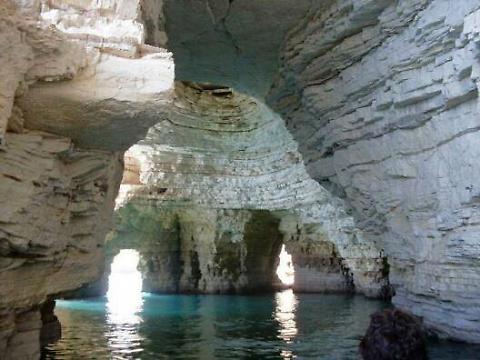
Un Gioiello Naturale
La Grotta degli Dei è una delle numerose grotte che punteggiano la costa di Peschici. Accessibile solo via mare, questa grotta è particolarmente suggestiva per le sue formazioni rocciose naturali e per i giochi di luce che si creano al suo interno quando i raggi del sole penetrano attraverso l’ingresso. Il nome della grotta deriva dalle figure mitologiche che, secondo la tradizione locale, sembrano essere scolpite nelle pareti rocciose dalla natura stessa.
Un’Esperienza Magica
Visitare la Grotta degli Dei è un’esperienza che incanta i visitatori. Le escursioni in barca, organizzate da guide locali esperte, permettono di esplorare questo luogo incantato e di apprezzare la sua bellezza incontaminata. Durante la visita, è possibile ammirare stalattiti e stalagmiti che si riflettono nelle acque cristalline, creando un’atmosfera quasi magica.
Una Storia di Mitologia e Natura
La Grotta degli Dei non è solo un fenomeno naturale, ma anche un luogo intriso di leggende. Si narra che gli antichi abitanti della zona credessero che le grotte fossero abitate da divinità marine e che queste figure mitologiche proteggessero i pescatori e i naviganti. Queste storie contribuiscono a rendere la visita alla grotta ancora più affascinante, immergendo i visitatori in un mix di natura, storia e mito.
Un Patrimonio da Proteggere
La Grotta degli Dei è anche un simbolo dell’importanza di preservare il patrimonio naturale di Peschici. Le autorità locali e le associazioni ambientaliste lavorano insieme per garantire che queste meraviglie naturali rimangano intatte per le future generazioni, promuovendo un turismo sostenibile che rispetti l’ambiente.
Questa curiosità su Peschici non solo mette in evidenza la bellezza naturale della zona, ma invita anche i visitatori a scoprire e rispettare uno dei suoi tesori nascosti. Una visita alla Grotta degli Dei offre un’opportunità unica per esplorare il fascino selvaggio e misterioso della costa del Gargano.
La Pietra di Trani
La Pietra di Trani: Un Tesoro Architettonico
Una delle curiosità più affascinanti di Trani è l’uso della “Pietra di Trani” nella costruzione di molti dei suoi edifici storici. La pietra di Trani è un tipo di calcare particolarmente pregiato e apprezzato per la sua bellezza e durabilità. Questa pietra ha un caratteristico colore chiaro, che varia dal bianco al beige, conferendo agli edifici un aspetto luminoso e distintivo.

Un Materiale di Prestigio
Utilizzata sin dall’epoca romana, la Pietra di Trani ha trovato impiego nelle costruzioni più prestigiose della città e della regione circostante. La Cattedrale di Trani, uno degli esempi più celebri, è interamente costruita con questa pietra, il che contribuisce alla sua maestosità e al suo fascino senza tempo.
Esportazione e Rinomata Qualità
Oltre a essere utilizzata localmente, la Pietra di Trani è stata esportata in tutto il mondo, impiegata in numerosi progetti architettonici di rilievo. La sua resistenza agli agenti atmosferici e la capacità di mantenere inalterate le sue qualità estetiche nel tempo la rendono particolarmente adatta sia per le strutture all’aperto che per gli interni.
Curiosità e Tradizione
La lavorazione della Pietra di Trani è una tradizione che si tramanda da generazioni. Gli scalpellini e gli artigiani locali hanno sviluppato tecniche uniche per lavorare questo materiale, creando vere e proprie opere d’arte che adornano la città. Visitare Trani significa immergersi in una storia di maestria artigianale che si riflette in ogni angolo della città, dai palazzi nobiliari alle chiese, fino alle semplici abitazioni.
Questa curiosità sulla Pietra di Trani non solo sottolinea l’importanza di questo materiale nella storia della città, ma invita anche i visitatori a osservare con attenzione le sfumature e i dettagli architettonici che rendono Trani un luogo unico nel suo genere.
